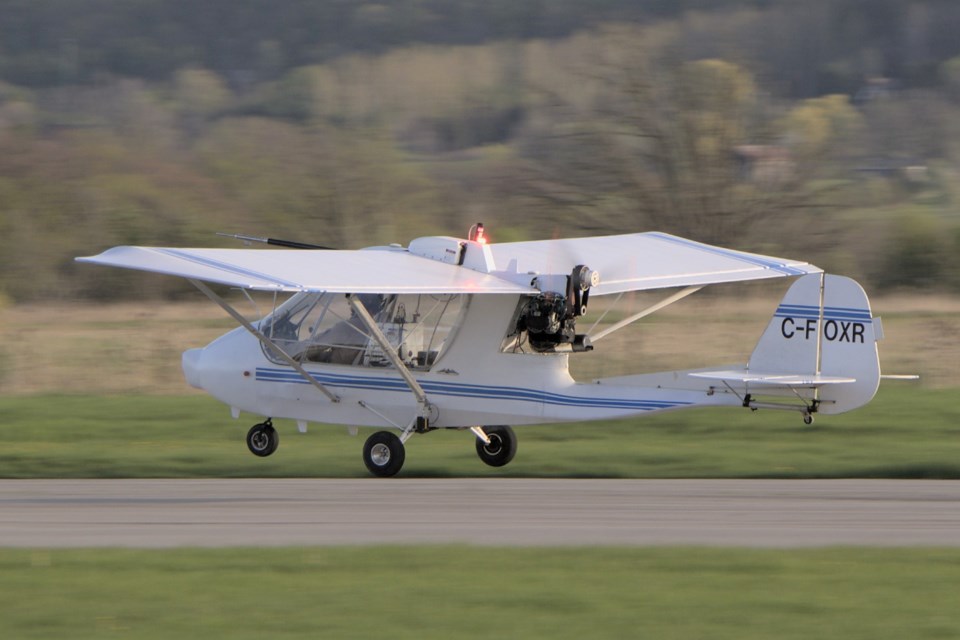Experimental airplane flights are being planned to have pilotless aircraft bring food and other essential products into rural and remote areas of Northern Ontario.
The new Toronto-based company called Ribbit (12031507 Canada Inc.) is an air cargo startup company that is developing software for automonous flight. The company this week signed a $1.3 million contract with Transport Canada and Innovative Solutions Canada to begin tests on self-flying aircraft in remote regions.
The tests are being done using a Quad Challenger-2 two-seater airplane.
The idea is to use light passenger planes, remove most of the seats to provide more cargo room and then convert the plane from a pilot-controlled airplane to a self-flying plane with remote control software and hardware.
The project began a few years back as an idea among students at the University of Waterloo which included Ribbit co-founders Jeremy Wang and Carl Pigeon. Both are aerospace engineers.
As Chief Operating Officer, Wang said the plan is to provide an air delivery service to remote communities at a cost that is cheaper than any current service. He said that can be done by using small and inexpensive airplanes that can take off and land in remote communities.
"We actually have a number of retailers and wholesalers that have already signed on as future customers," said Wang.
"These are locally owned businesses that serve Northern Ontario, northern Manitoba, parts of the coastal communities along Newfoundland and Labrador, and also Nunavut."
Wang said there is a demand for service in remote communities for timely delivery of things like food and medical items.
"The goal is really to try and improve that transportation link so that we can get food and other perishables, time-sensitive items, medical supplies, etcetera into these communities at a lower price to the end-consumer more reliably, and more frequently,” he said.
Wang said the plan is to create specific airport hubs in Northern Ontario, Northern Manitoba and Labrador where supplies can be delivered by conventional means, and then distributed out to the more remote locations.
He said the company is flexible in terms of where it would create a hub, but if there is a regular demand for specific pick-ups and deliveries, then that could work as well.
"At this point I would say we are flexible," said Wang. "Certainly, when you look at if we were to establish any kind of long term operation where we have consistent flights in and out of a transportation hub like Timmins or North Bay or Sudbury, we probably want to work a little bit more closely with the stores there so that we have enough volume to have a plane there, stationed permanently.”
If the demand was a one-off or a special event, Wang said the company would certainly be willing to reposition a plane in that community for a brief time.
The other thing that makes the plan stand out, said Wang, is that the service is based on being able to ship a larger volume of goods that one might get from a drone for example.
"We want to pick the right tool for the right job,” he said. “When you consider there's literally thousands of pounds of food that gets shipped in so many of these communities on a weekly basis, a drone is not going to cut it.
"You kind of need a full-sized airplane in order to fulfill that demand. So that's why we were retrofitting these full-size airplanes. We're starting with a two seater fixed wing aircraft. But really, our sweet spot would be something in the six to 19 seater range. We have to start small and work our way there.”
Testing so far has involved using an aircraft for a hands-free taxiing, take off, flying circuits, testing collision avoidance systems and landing. Much of the testing has involved an on-board safety pilot, but the pilot was hands-off.
Wang said the current plan is that once the actual flights are in operation, a hands-free pilot could be located on the ground.
"So there's still a remote operator,” he said. “That will always be the case because we want to have somebody monitoring these flights. However, the aircraft is flying itself. So from the moment that you know, it leaves the gates and it's taxiing, taking off flying from the origin to the destination, avoiding planes along the way, getting back into the airport circuit and then landing, all of that's being done by the plane.”
He said the remote pilot will monitor progress and provide any necessary radio communication. Wang added that if an emergency occurred and the backup systems failed, then a human can take over operation of the plane.
He said the plan eventually is to have one operator overseeing the flights of two or three planes at a time.
Wang said things will happen in phases but he is hopeful more news will be coming out in the next year.
"What I can say is that over the next 12 months through this contract with Transport Canada, the federal government, we will be starting to test commercial deliveries to some of these communities. In terms of how quickly it will scale up, you know, we'll see how that plays out. But we're excited and we're going to do everything we can to try and address this issue of transportation."
Len Gillis covers mining and health care for Sudbury.com.
